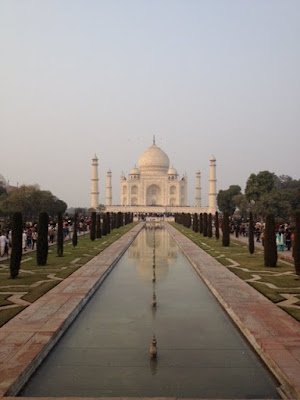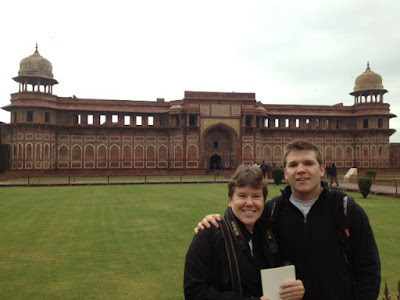Underwater in the Andaman Islands
From Delhi, it was two hours to Kolkata, two hours to Port Blair, with only the hum of airplane noise, and then two and a half hours by ferry to Havelock, where Justin was going to take in some underwater safaris. He was looking forward to learning how to scuba dive and with the help of Rajtik and Rahul, he earned his advance certification through SSI.
Upon arriving at Island Vinnie's, the guys at Dive India had Justin watching some videos and begin reading the SSI manual to prepare him for his first day of scuba diving. At 7:30 the next morning, he was kitting up, i.e. assembling his scuba gear, and was in the water by 8:20. By the time I got back from my two dives, which consisted of an hour and a half boat ride each way in four to six foot seas in a 30 foot long wooden boat, he was already hooked.
The next morning, even before he opened his eyes, he had a smile on his face and said, "I'm going diving today." I couldn't have been happier. And to make things even better, he'd checked his emails, and was being asked to do a phone interview for an internship while we were in the Andamans. He figured out how, where and when to make the phone call in between his diving, passed his written exam, and then had to wait for a response to the interview, but only for a day. Now he was a certified open water diver with a three-month internship with Level Up, a company that provides incentives when you pay with your cell phone. Now he could relax and enjoy diving. We dove together, Justin dolphin kicking along the way as I pointed out all the small stuff I enjoy--juvenile fishes, starfish and coral citings, though the coral has been bleached out horribly here. 100 degree temps will do that. The fish life is good though, with many juveniles, and emerging coral regrowth so that was encouraging.
But I couldn't let Justin relax too much. I encouraged him to get his advanced certification. He was going to dive anyway, and this way he's now certified to go as deep as 130 feet. He did his navigation dive in not-so-great visibility. He thought he needed to do it over, until Rahul told him he did right. Apparently Rahul had moved, so wasn't where Justin correctly ended his navigation exercise. Justin might not have done the night dive had it not been one of the five advanced dives, and that was one of his favorites--marching sea urchins, lobsters, scorpion fish, an electric clam--like a thin flashing neon light, and bio-luminescence on our safety stop. He learned about underwater photography and took my picture, and listened to Rahul, a marine biologist, talk about the various fishes Justin had already been identifying from the fish books.
On our last day of diving, we went to Johnny's Gorge, with founder Johnny. Justin saw his first shark, sea snake, schools of barracuda, his favorite blue fin travaley, tuna, an electric ray to add to his sightings of humphead parrot fish, bumphead wrasse, clown triggerfish, anenomefish, nudibranches, potato cods, giant groupers, striped sweetlips and more. At least the Titan triggerfish left him alone on this dive. He'd had to fend one off the day before. Guess they are in nesting season now.
I don't know if Justin will favor diving as much as golf, but he says this is a lifetime sport for him. Maybe he'll agree to be my dive buddy once in a while!!!








